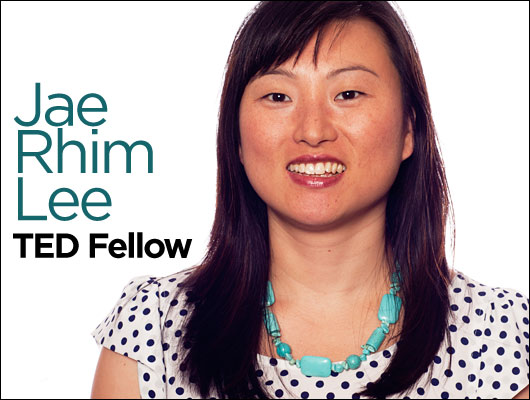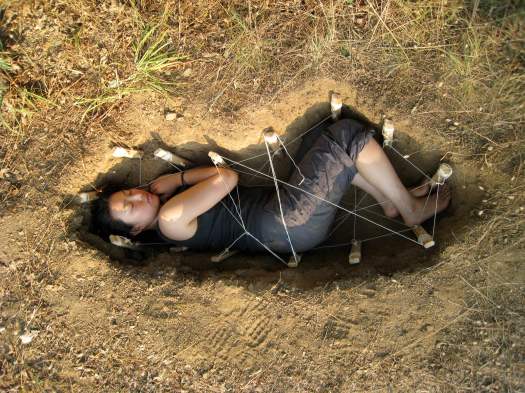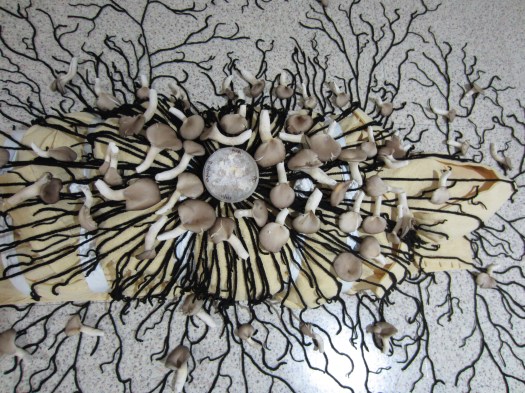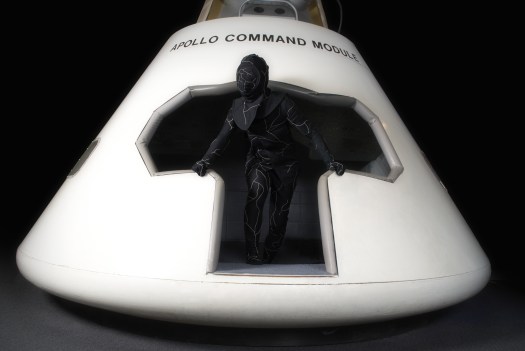
You’re an artist and designer primarily concerned with how our bodies interact with the world.
I’m concerned with finding alternatives that challenge the disconnect we have between our bodies and the environment, and the fear that we have of our own bodies. I think ultimately it speaks to our denial of death, our fear of death. Our bodies are essentially our primary reminders that we are mortal –- that we are physical beings. We eat, we defecate, we decay.
Can you tell me the idea behind the Infinity Burial Project?
I became very interested in the relationship between death denial and the fact that death has become harmful to the environment. I think death could provide an opportunity to reconcile all of our energy and resource consumption and pollution. Instead, in the West, at least, we fear death –- a fear which leads us to embalm the body with toxic chemicals.
I wanted to create a project and set of tools that would challenge this by promoting the actual process of and acceptance of decomposition.
But if you’re dead, why does it matter?
By simply living, eating and breathing, our bodies become storehouses of toxins, energy, and resources that are accumulated over a lifetime. Contemporary funeral practices both return those toxins to the environment and, in the case of a “traditional” funeral, increase the toxin load. In the practice of embalming, the body is drained of fluids and replaced with a formaldehyde-based fluid, which preserves the body so that it looks “alive” for open-casket viewing. Meanwhile, the body itself becomes a toxic site, which causes respiratory problems and cancer in funeral personnel.
When a body is cremated, it releases all those toxins into the atmosphere, not to mention the additional energy used –- about 5 kilowatt hours, a tremendous amount. There’s no control over how the toxins then get reintegrated back into the environment -– all the mercury goes into the air, which falls back into the water, which goes into the plant life and the oceans and the fish, and then cycles back into our bodies. And many people think cremation is the most green option. It may be better than some funeral practices, but it’s not really green at all.
Have you found a species of mushrooms that already breaks down human tissue, are you developing one?
I am in the process of training edible mushroom species to break down human tissue –- cultivating them on my own discarded body tissue –- because they are known to remediate some of our environmental toxins. Of course, there’s no single mushroom or cluster of mushrooms that remediates all the toxins involved, but it’s a start. Paul Stamets has proven you can train some mushrooms to grow on any organic material. He has trained them to eat petrochemicals.
How does one train a mushroom?
Although the mushrooms I’m using prefer wood-based food sources, mushrooms will pretty much eat anything. The training process involves introducing different food sources to the mushrooms and then slowly depriving the mushrooms of wood-based substances. One mycologist has even trained mushrooms to eat plastics like Bakelite.
Your spore-embroidered ninja suit, which is in development, is a prototype. So tell us how this works: the corpse will be dressed and buried in the suit? What’s it made of?
The suit is made of a cotton base layer that is overlaid with a crocheted cotton netting. The netting is embedded with mushroom mycelia and spores. The pattern of this crocheted netting is a visual representation of how mushroom mycelia grow.
I’m also working on other delivery mechanisms. One is a second skin made of a nutrient gel, embedded with bacteria and spore-filled capsules.
Are people donating their bodies to you already?
Yes, a number of people have offered to do so. My TED Talk has allowed me to reach a broader audience, and as a result more folks have signed up to become decompinauts. But no formal agreements have been made. I’m exploring what language and legal instruments are needed to allow donations.
What else are you working on now?
I’m planning a workshop on the ins and outs of choosing, then declaring — both legally and socially — one’s desired postmortem corpse-disposal method. The workshop is meant to be educational and facilitate the selection of alternative postmortem options such as the Infinity Burial System.
Do your ideas spring from doing art? Or do they originate from life experience, then find expression in art?
The ideas often develop initially out of a lived experience such as a specific event, physical condition, etc. But then each project expands to become a platform for inquiry about larger issues. The design or product is not the end goal, but rather the beginning of an intentional dialogue.
For example, the MIT FEMA Trailer Project grew out of my work with the City of New Orleans and its soil remediation efforts. We received a single surplus FEMATrailer and converted it into a mobile composting site with a vertical garden, rainwater recycling apparatus, and Permaculture library. We used the trailer transformation as an opportunity to understand and create dialogue about the history of the trailers (via a timeline), their part in the longstanding and entrenched environmental justice issues in the Gulf Coast, and government waste.
In the case of the Infinity Burial Project, the Mushroom Death Suit, the Decompiculture Society, and the alternative postmortem gear are tools in themselves, but are also ways to investigate and create a dialogue around our funeral practices, death denial, and the relationship between our postmortem practices and the environment.
Tell me about the art program at MIT, and how you came to this very interesting intersection of science and art.
The visual arts program at MIT (now called the Program in Art, Culture and Technology) grew out of the Center for Advanced Visual Studies that was founded by Gyorgy Kepes in the 1960s, then later directed by Otto Piene in the spirit of facilitating greater integration of art, technology, and science.
Today, the program is based in the Department of Architecture and directed by curator Ute Meta Bauer. Many of the students and faculty are involved in research-based, transdisciplinary practices that don’t necessarily fit into a typical art or design structure.
I studied psychology and was pre-med as an undergrad, and just prior to entering the program I was involved in social work and social policy research. So when I started to look at art programs, I wanted to be in a place where aesthetic, social, and scientific inquiry could work together.
How has being a TED Fellow changed the way you approach your work?
I’ve been truly inspired by meeting the other Fellows and joining a community of discipline-agnostic game changers. What’s been really illuminating is learning that our methodologies are often interchangeable or transferable -– such as the strategies used to build a community around one’s work. This has imparted a feeling that I no longer operate in an art ghetto, that the definition and reach of my work, the processes, and dialogue are much broader than I realized.
There are many aspiring social entrepreneurs out there who are trying to take their passion and ideas to the next level. What one piece of advice would you give them, based on your own experience and successes?
A friend of mine came up with the phrase “Input thinking, output feeling” — in other words, don’t take things personally, and treat others with sensitivity and empathy. Doris Kearns Goodwin writes about Abraham Lincoln’s legendary empathy, which he exercised both in political strategizing and in his personal interactions with soldiers and young children, among others. He denounced criticism of Southern slave owners, and instead tried to understand their motivations, which allowed him later to mold and shift attitudes.



Comments (1)
Pingback: Review : TED (Ideas Worth Spreading) – BIOTEKNOLOGI